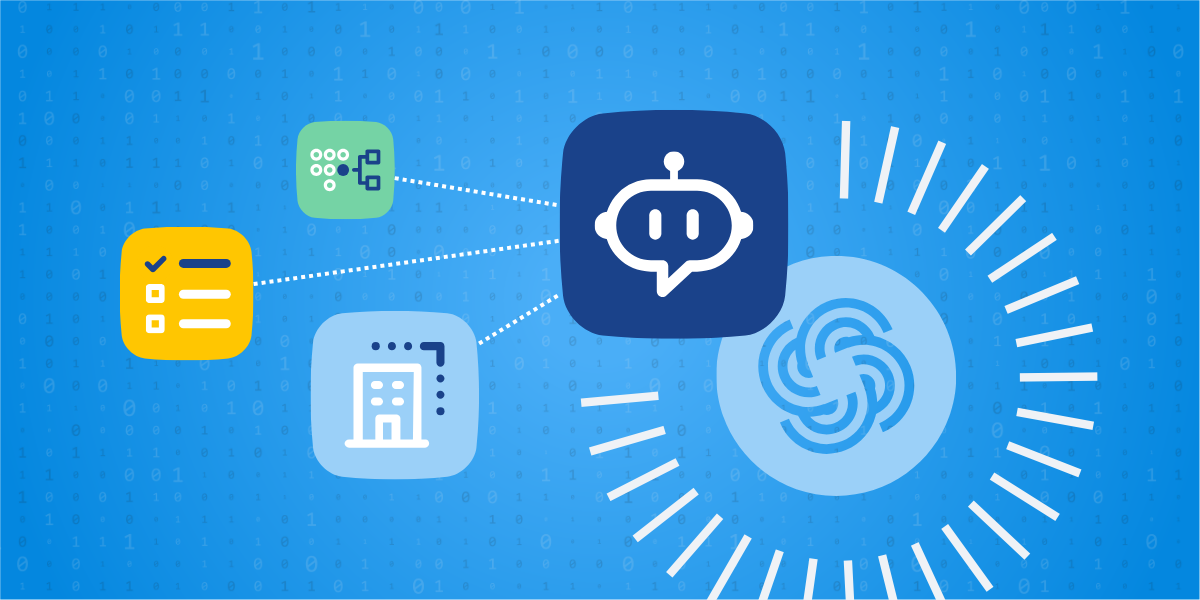The Role of AI in Reducing Agent Handle Time: Revolutionizing Cloud-Based Contact Center Efficiency

Contact centers are constantly under pressure to improve efficiency while maintaining high levels of customer satisfaction. One key metric that significantly impacts operational costs and customer experience is agent handle time. As organizations strive to optimize this crucial performance indicator, artificial intelligence (AI) has emerged as a game-changing technology. Let's explore how AI, enabled by cloud-based voice services, transforms agent support and dramatically reduces handle times in contact centers worldwide.
As businesses transition their voice services to the cloud, they unlock powerful new capabilities for enhancing contact center efficiency. Cloud-based infrastructure provides the scalability, flexibility, and processing power necessary to implement advanced AI solutions previously out of reach for many organizations.
Understanding Agent Handle Time
Before diving into the AI revolution, let's first understand what agent handle time is and why it matters. Handle time refers to the total duration an agent spends on a customer interaction, including talk time, hold time, and after-call work. It's a critical metric because it directly affects:
- Operational costs: Shorter handle times mean agents can handle more calls, potentially reducing staffing needs.
- Customer satisfaction: Quick resolution of issues leads to happier customers.
- Agent productivity: Efficient handling of calls can improve agent morale and reduce burnout.
However, reducing handle time isn't just about speed. It's about finding the perfect balance between efficiency and quality of service. This is where AI comes into play, offering solutions that cut down handle times and enhance the overall customer experience.
How AI is Transforming Agent Support
Artificial Intelligence is no longer a futuristic concept in contact centers—it's a present reality. According to our recent State of International Voice for Contact Centers report, an overwhelming 94% of companies use or are evaluating AI for their voice channels, with 67% seeing benefits specifically in the agent assistance space.
AI technologies are being deployed in various ways to support agents and reduce handle times:
- Real-time speech analytics
- Intelligent routing and customer intent prediction
- Automated post-call work
- AI-powered knowledge bases and suggestion systems
Let's delve deeper into each of these applications and how they contribute to reducing handle times.
Real-time Speech Analytics
Real-time speech analytics is one of the most potent AI applications in contact centers. This technology can:
- Analyze customer sentiment during the call, alerting the agent to potential escalations.
- Identify keywords or phrases that indicate specific customer needs, helping agents quickly understand the issue.
- Provide real-time coaching to agents, suggesting responses or next steps based on the conversation flow.
Real-time speech analytics can significantly reduce the time needed to understand and address customer issues by providing agents with instant insights and guidance.
Intelligent Routing and Customer Intent Prediction
AI-powered routing systems go beyond traditional rule-based routing. They can:
- Analyze historical data to predict the best agent for each specific customer query.
- Understand customer intent from initial interactions (e.g., IVR choices, chatbot conversations) and route accordingly.
- Dynamically adjust routing based on real-time factors like queue lengths and agent availability.
These systems can dramatically reduce handle times and the need for call transfers by ensuring that calls are directed to the most suitable agent from the start.
Automated Post-call Work
After-call work, including call logging and updating customer records, can significantly add to overall handle times. AI can help by:
- Automatically generating call summaries based on speech-to-text transcriptions.
- Identifying key issues and outcomes from the call and updating relevant fields in the CRM.
- Suggesting follow-up actions based on the call content.
By automating these tasks, agents can move on to the next call more quickly, reducing overall handle time without sacrificing documentation quality.
AI-powered Knowledge Bases and Suggestion Systems
Perhaps one of the most impactful applications of AI in reducing handle times is through enhanced knowledge management:
- AI can understand the context of a customer query and instantly suggest relevant information from the knowledge base.
- Machine learning algorithms can continuously improve suggestions based on which information agents find most useful.
- Natural language processing can help agents quickly find answers even when customers use terms they are not familiar with.
These systems put the collective knowledge of the entire contact center at each agent's fingertips, enabling them to provide accurate information quickly without extensive searching or escalations.
Benefits of AI in Reducing Handle Time
Implementing AI technologies in contact centers has shown impressive results in handle time reduction. While specific figures can vary based on the organization and technologies implemented, some 67% of contact centers anticipate benefits. These could include:
- Reduction in average handle time
- Reduction in after-call work time
- Significant improvements in first-call resolution rates
Beyond these quantitative improvements, AI also brings qualitative benefits:
- Increased agent satisfaction: AI can make agents' jobs more engaging and less stressful by providing real-time support and automating mundane tasks.
- Enhanced customer experience: Faster resolution times and more accurate information lead to higher customer satisfaction scores.
- Improved consistency: AI helps ensure customers receive consistent information and treatment across interactions.
Implementation Challenges and Solutions
While the benefits of AI in reducing handle times are clear, implementing these technologies is not without challenges. Here are some common hurdles and strategies to overcome them:
Integration with existing systems
Challenge: Many contact centers have complex, legacy systems that may not easily integrate with new AI technologies.
Solution: Look for AI solutions that offer robust APIs and integration capabilities. Consider a phased approach to implementation, starting with areas that can provide quick wins.
Agent training and adoption
Challenge: Agents may resist new technologies or struggle to incorporate them into their workflows.
Solution: Invest in comprehensive training programs. Emphasize how AI tools will make agents' jobs easier, not replace them. Consider gamification to encourage adoption.
Balancing automation with human touch
Challenge: Over-reliance on AI can lead to a loss of the personal touch that many customers value.
Solution: Use AI to augment, not replace, human agents. Train agents to leverage AI insights while maintaining empathy and a personal connection with customers.
Cloud Migration Challenges
Challenge: Transitioning from legacy on-premises systems to cloud-based voice services can be complex.
Solution: Develop a phased migration plan, starting with pilot projects to demonstrate value. Partner with experienced cloud voice providers who offer comprehensive migration support and have a track record of successful transitions.
Future Trends in AI for Handle Time Reduction
As AI technology evolves, we can expect even more advanced applications in the contact center. Some trends to watch include:
- Predictive analytics for proactive customer service: AI systems that can anticipate customer needs before they even contact the company, potentially reducing the need for some calls altogether.
- Advanced natural language processing (NLP): Improvements in NLP will lead to an even more accurate understanding of customer intent and sentiment, further streamlining interactions.
- Personalized AI assistants for agents: Each agent could have a personalized AI assistant that learns their strengths and working style, providing tailored support to maximize efficiency.
Accelerated cloud adoption: As more businesses recognize the benefits of cloud-based voice services, we'll see increased migration to the cloud, enabling wider adoption of sophisticated AI technologies for handle time reduction.
The Role of Cloud-Based Voice in an AI-Powered Future
The potential for AI to reduce agent handle time is transformative and far-reaching. Other results include improved customer satisfaction, agent engagement, and overall operational efficiency.
As organizations look to implement these AI-powered solutions, transitioning voice services to the cloud becomes beneficial and essential. Voice calls need to move seamlessly from AI agents to human agents and back again—a difficult process when working with on-prem solutions. The end result is an inconsistent customer experience.
Combining voice in the cloud with AI needs to happen for three reasons:
- Voice calls need to move seamlessly between AI agents and human agents. Many transactions start off in one channel but need to be escalated to another. Cloud voice can be more tightly integrated with AI solutions than on-premise offerings, making that process easier for IT and contact center operations.
- Data must be mined to improve the AI experience. AI is only as good as what it knows, including historical context and what leads to positive or negative outcomes. Voice calls represent a treasure trove of information to support a conversation in real-time or for future agent training purposes. Cloud voice becomes important becuase there’s benefits including flexibility (when should I move it?) and speed (how quickly can I do it?) when moving that data from one cloud system to another.
- AI experiences need to be globally consistent and future-proof. If we’ve learned anything in the past few years, its that AI is moving fast. Better that your existing hardware will support future AI use cases is risky. Cloud-based solutions are more easily upgradable to integrate with new AI tools that emerge over time.
As we look to the future, AI will clearly play an increasingly central role in contact center operations. Organizations that embrace these technologies and effectively integrate them into their cloud-based workflows will be well-positioned to meet the evolving demands of customer service in an increasingly digital world.
Ready to explore how transitioning your voice services to the cloud can unlock AI-powered efficiency in your contact center? Contact AVOXI today to learn about our cloud voice solutions and how they can integrate with cutting-edge AI technologies to revolutionize your customer service operations.
Download our full State of International Voice for Contact Centers report to gain insights into the latest trends and best practices in leveraging AI for contact center optimization.
